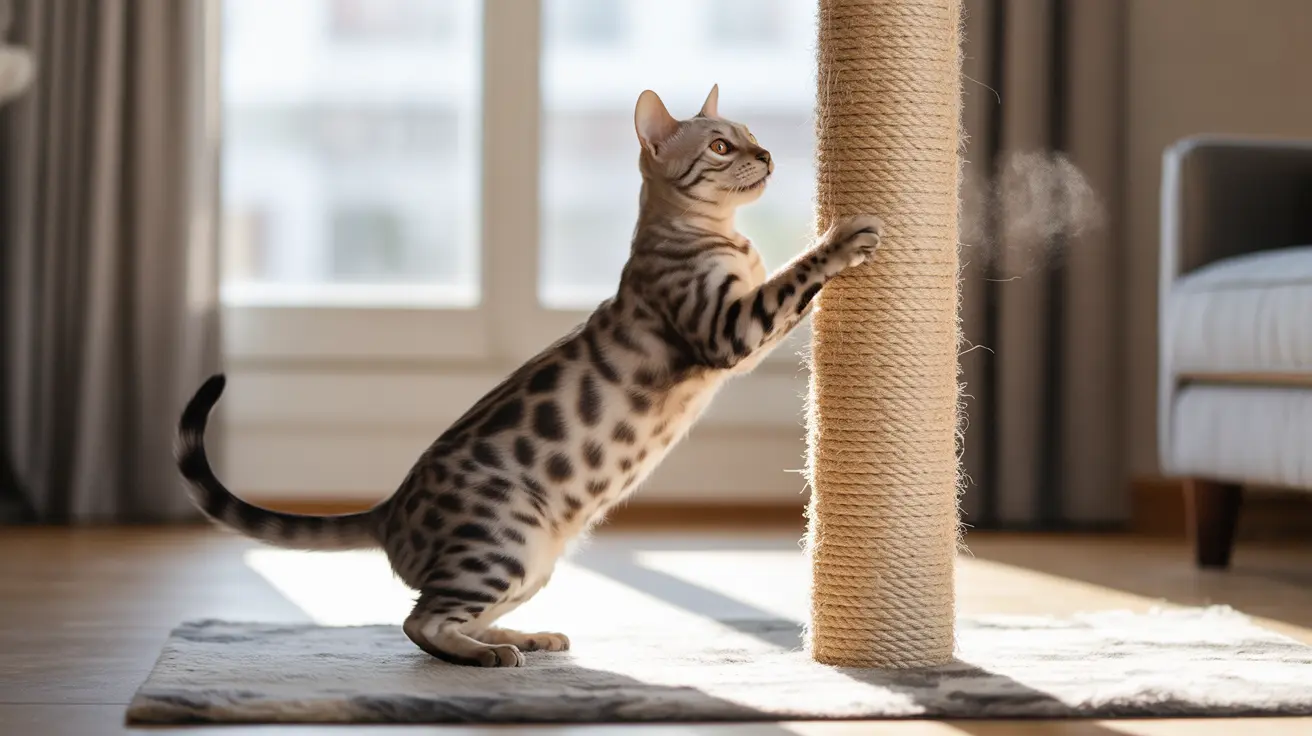Understanding Why Cats Scratch Carpet at Night
Cats are naturally more active during twilight hours, and their scratching behavior often intensifies at night. This instinctive behavior serves multiple purposes:
- Territorial marking through visual and scent signals
- Claw maintenance and stretching
- Stress relief and energy release
- Attention-seeking behavior
The Role of Natural Instincts
Scratching is deeply ingrained in feline DNA, serving as both a physical necessity and a communication tool. When cats scratch, they leave both visible marks and invisible pheromones that mark their territory, making certain spots particularly attractive for repeated scratching.
Essential Prevention Strategies
Create Alternative Scratching Stations
The most effective way to stop carpet scratching is to provide appealing alternatives:
- Install multiple scratching posts near problem areas
- Offer various textures (sisal, cardboard, rope)
- Include both vertical and horizontal scratching surfaces
- Place posts in socially important areas
Make Carpets Less Appealing
Deterring carpet scratching requires making the surface less attractive:
- Apply double-sided tape to problem areas
- Use aluminum foil as a temporary deterrent
- Install carpet runners (spike-side up) in frequently scratched spots
- Clean areas thoroughly to remove territorial markers
Nighttime Management Techniques
Environmental Modifications
Control your cat's access and environment during night hours:
- Close doors to carpeted rooms at night
- Provide designated play areas with appropriate scratching surfaces
- Use calming pheromone diffusers in problem areas
- Ensure adequate exercise during daylight hours
Energy Management
Help your cat expend energy appropriately:
- Schedule interactive play sessions before bedtime
- Provide puzzle feeders and solo play toys
- Consider automated play devices for nighttime entertainment
Long-term Solutions and Training
Positive Reinforcement
Train your cat to use appropriate scratching surfaces:
- Reward correct scratching behavior with treats and praise
- Demonstrate proper scratching post use
- Never punish carpet scratching, as this can increase anxiety
Regular Maintenance
Maintain an environment that encourages proper scratching:
- Trim your cat's claws regularly
- Replace worn scratching posts promptly
- Rotate toys and scratching surfaces to maintain interest
Frequently Asked Questions
Why does my cat scratch the carpet mainly at night?
Cats are crepuscular animals, meaning they're most active during dawn and dusk. Nighttime scratching often occurs due to natural energy patterns, boredom, or attention-seeking behavior when owners are less available.
How can I stop my cat from scratching the carpet without using punishment?
Focus on positive reinforcement by providing attractive alternatives, using deterrents like double-sided tape, and rewarding proper scratching behavior. Ensure multiple scratching posts are available and positioned in socially important areas.
What are the best alternatives to carpet for cats to scratch, and how do I introduce them?
Sisal rope posts, cardboard scratchers, and natural wood surfaces make excellent alternatives. Introduce them by placing them near favorite scratching spots, using catnip to attract interest, and demonstrating their use with gentle paw manipulation.
Which home remedies or deterrents effectively prevent cats from scratching carpets?
Double-sided tape, aluminum foil, and carpet runners (spike-side up) are effective deterrents. Commercial products like Sticky Paws also work well. Combine these with appealing alternatives for best results.
How does increasing play and exercise help reduce nighttime carpet scratching in cats?
Regular play and exercise help deplete excess energy, reducing nighttime activity. Interactive play sessions before bedtime can tire your cat out naturally, making them more likely to rest during the night instead of engaging in unwanted behaviors.
With patience and consistent application of these strategies, you can successfully redirect your cat's scratching behavior from your carpet to more appropriate surfaces, ensuring both your home's integrity and your cat's well-being.






